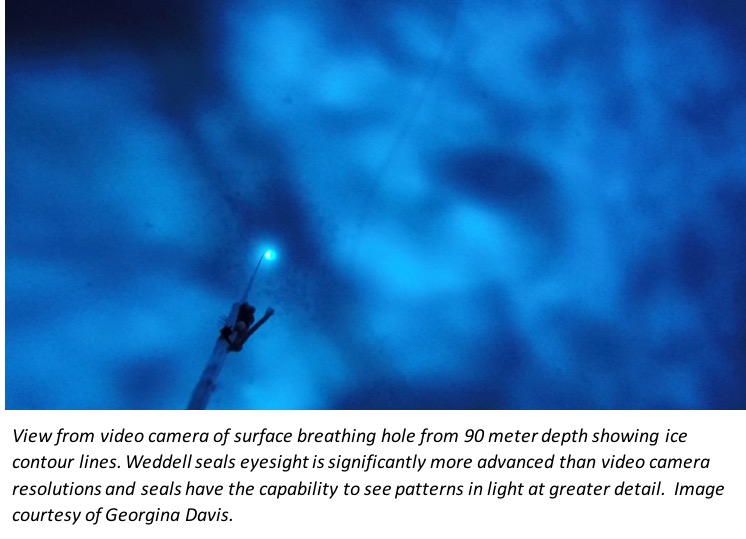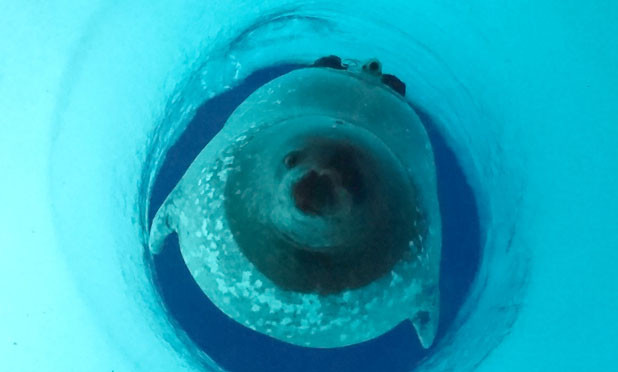 Study reveals that Weddell seals primarily use sight to find obscure breathing holes
Study reveals that Weddell seals primarily use sight to find obscure breathing holes
Until now, no one knew how Weddell seals navigate the ice-covered waters to locate breathing holes. Finding their way back to a breathing hole under the Antarctic ice is an impressive feat because the seals travel as deep as 300 meters and swim as far away as 1000 meters (over a half mile!). Scientists now know that, in the summer, Weddell seals use their eyes to home in one their breathing holes.
In a study led by Dr. Lee Fuiman, Professor at the University of Texas Marine Science Institute, and published in Marine Biology, researchers designed an experiment to determine how Weddell seals find their way back from long-distance dives, testing hypotheses that they use Earth’s magnetic field, the wake they create while swimming, memory of their own body movements, of visible landmarks. With the use of innovative sensors attached to the seals, the scientists were able to reconstruct the 3-D movements under low-light conditions and in different magnetic fields. What they discovered was that the Weddell seals followed familiar landmarks in the ice that were visible from below. In fact, 75% of the routes the seals took were directly below linear disturbances in the snow that the scientists had created. The seals more closely followed those disturbances when their dives were shallow.
Weddell seals are well adapted to low light levels in the Antarctic. Their large eyes and pupils are packed with photoreceptors and they can look up at the surface of the ice without moving their head or changing swimming direction. While this study was conducted during twilight hours when the sun was slightly below the horizon, scientists do not know how seals navigate to breathing holes during the polar winter when the sky is dark. It is likely that seals use another sense or combination of senses.
The research was conducted at McMurdo Station, Antarctica, and was funded by the National Science Foundation. The project is a collaboration with colleagues Dr. Terrie Williams from University of California – Santa Cruz, and Dr. Randall Davis from Texas A&M University – Galveston.









